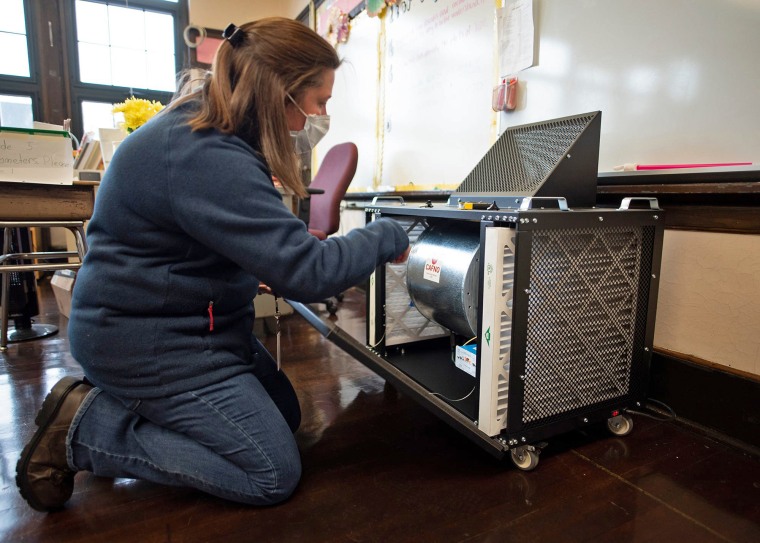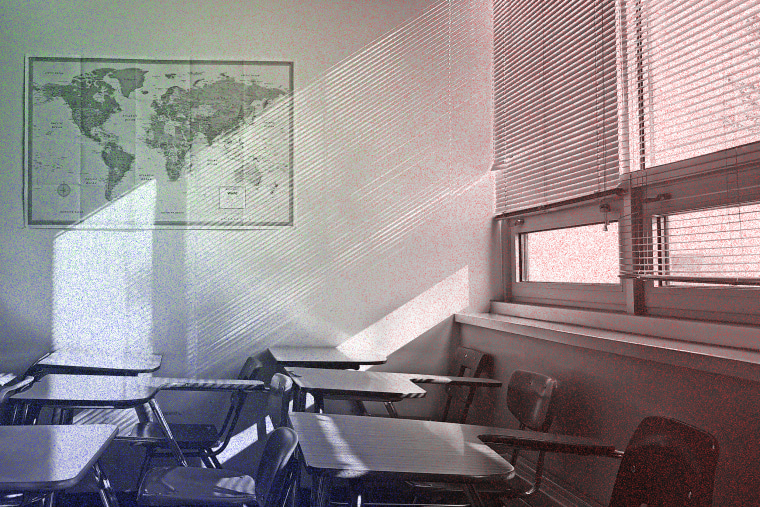WASHINGTON — The Education Department is drafting new guidance about indoor air safety in schools, administration officials said, as a group of scientists, engineers and experts warn that schools have spent hundreds of millions of federal dollars on electronic air cleaning devices that are scientifically unproven and could produce harmful chemical byproducts.
At least 250 public schools or school systems and some universities have bought the devices, including ionizers and ozone-generating mechanisms, which lack peer-reviewed scientific data, are unregulated and could even be bad for students' health, especially children with asthma or allergies, the experts say.
"This is a list of the most prominent people working" in the area of indoor air quality, said William Bahnfleth, chair of the epidemic task force of the American Society of Heating, Refrigerating and Air-Conditioning Engineers. The concerns "are all based on evidence," he said.
The technology is different from HEPA filters and UV lights, which are scientifically proven to filter indoor air. Congress didn't stipulate in any of its Covid-19 relief legislation, which included $193 billion for schools, which types of devices must be purchased.

"When the money was distributed, it didn't say the magic words: 'You have to use it on proven technologies,'" said Marwa Zaatari, a member of the task force who compiled a list based on public sources, including news releases. "They just gave money. A lot of it."
Nicole Goren, a California woman with two children who has been contacting lawmakers about the issue, said that with billions of dollars in CARES Act funding on the table, "my goal is to get to the legislative level," meaning Congress.
Last week, a class action lawsuit was filed against Global Plasma Solutions, a top seller of one of the most popular high-tech ionizer technologies among schools, claiming that its devices don't work as advertised and that they could emit harmful chemicals, according to the filing. Kevin Boyle, a Global Plasma Solutions spokesperson, said in a statement that "we intend to aggressively defend our technology and claims" and believes its devices are safer than traditional ionizing technology.
Poor ventilation in aging schools was a chronic issue before Covid-19. Because younger children are unlikely to be vaccinated this year, schools under pressure to improve air quality are spending millions of dollars on electronic air cleaning "gimmicks," Zaatari said. Well-intentioned school officials are buying based on marketing materials citing manufacturer-funded lab tests — in the absence of peer-reviewed scientific studies, she said.
The Asthma & Allergy Foundation of America and the Environmental Protection Agency have also warned against ozone generators. The asthma foundation says that ionizers can irritate airways and cause asthma symptoms and that they haven't been found to reduce the spread of the coronavirus. Other potentially harmful byproducts from ionizers are formaldehyde and ultrafine particles. Zaatari and Bahnfleth are among about a dozen scientists, engineers and consultants who wrote an open letter warning schools.
"In the absence of regulation and with presently very little peer-reviewed research, significant questions remain regarding effectiveness and the potential impacts on human health," they wrote.
It's unclear how many schools are buying the ionizers. But purchases account for millions of the billions of dollars in federal CARES Act Covid-19 relief funds already circulating, Zaatari said. A Kaiser Health News study found that more than 2,000 schools in 44 states have bought the devices during the pandemic.
In a recent interview, Education Secretary Miguel Cardona confirmed that he has discussed with both Dr. Rochelle Walensky, director of the Centers for Disease Control and Prevention, and Health and Human Services Secretary Xavier Becerra "how we can lock arms" and encourage health experts to "tell us a good strategy to make sure that air quality is there."
The CDC is concerned enough that it has been advising the Education Department about how to reach out to schools, a senior CDC official said. That includes urging schools to demand scientific research showing whether the devices work and that they don't emit potentially hazardous levels of ozone. An Education Department spokesperson said updated guidelines are expected later this month.
Buying spree
In the meantime, hundreds and potentially thousands of schools are buying devices that could emit ozone at levels above the limit recommended by the American Society of Heating, Refrigerating and Air-Conditioning Engineers, Zaatari said.
Newark Public Schools in New Jersey used CARES Act funds to buy 4,500 ionizer air cleaners, worth more than $7 million, said Valerie Merritt, a school district spokesperson. She said several Newark schools have recently measured safe ozone levels with hydroxyl air processors running. Zaatari said using devices that emit any amount of ozone is dangerous because it is "highly reactive" indoors, forming new pollutants, such as formaldehyde, among other issues.

The Spotsylvania County School District in Virginia spent $1.4 million on ionizers for dozens of schools, according to invoices Zaatari obtained through a public records request and provided to NBC News.
Marc Broklawski, a parent of two, said, "They see our school districts flush with cash from the federal government." He said he has repeatedly requested independent safety data from the seller but hasn't received it.
Broklawski, whose wife is a chemistry teacher in the district, said he believes many educators are scared to speak up. Schools under pressure to reopen while protecting unvaccinated children made "snap decisions" to install the devices, he said. Broklawski is so concerned about a secondary "health crisis" due to air quality in schools that, he said, he has decided to run for the school board.
Amber Belako, a school district spokesperson, said in a statement that the district installed ionizers "after months of research and consultation with industry professionals."
"There are safety measures in place within our HVAC systems and the ionization units do not run unless the HVAC system runs," said Belako, who said the system is a "mitigation strategy" being used with other measures.
A CDC study found that indoor ozone shouldn't be more than 10 parts per billion; studies performed during use of units like those bought by the Newark schools found ozone levels several times that, Zaatari said, citing tests performed for the company. The ozone standard set by the American Society of Heating, Refrigerating and Air-Conditioning Engineers and the Environmental Protection Agency for indoor ozone generating devices is 5 ppb, Zaatari said.
More concerns
The EPA also has a detailed warning on its website about ozone generators sold as air cleaners. Some ozone generators are manufactured with an "ion generator" or an "ionizer" in the same unit, it said.
"Often the vendors of ozone generators make statements and distribute material that lead the public to believe that these devices are always safe and effective in controlling indoor air pollution. For almost a century, health professionals have refuted these claims," it said.
Still, Zaatari said, there are no federal regulations for the devices or standards to test the efficacy and safety of specific devices.
"It is almost criminal that, after the relentless effort of many experts to push for improved indoor air quality and the millions of dollars in relief money, we end up with even worse air quality in some schools," she said.

